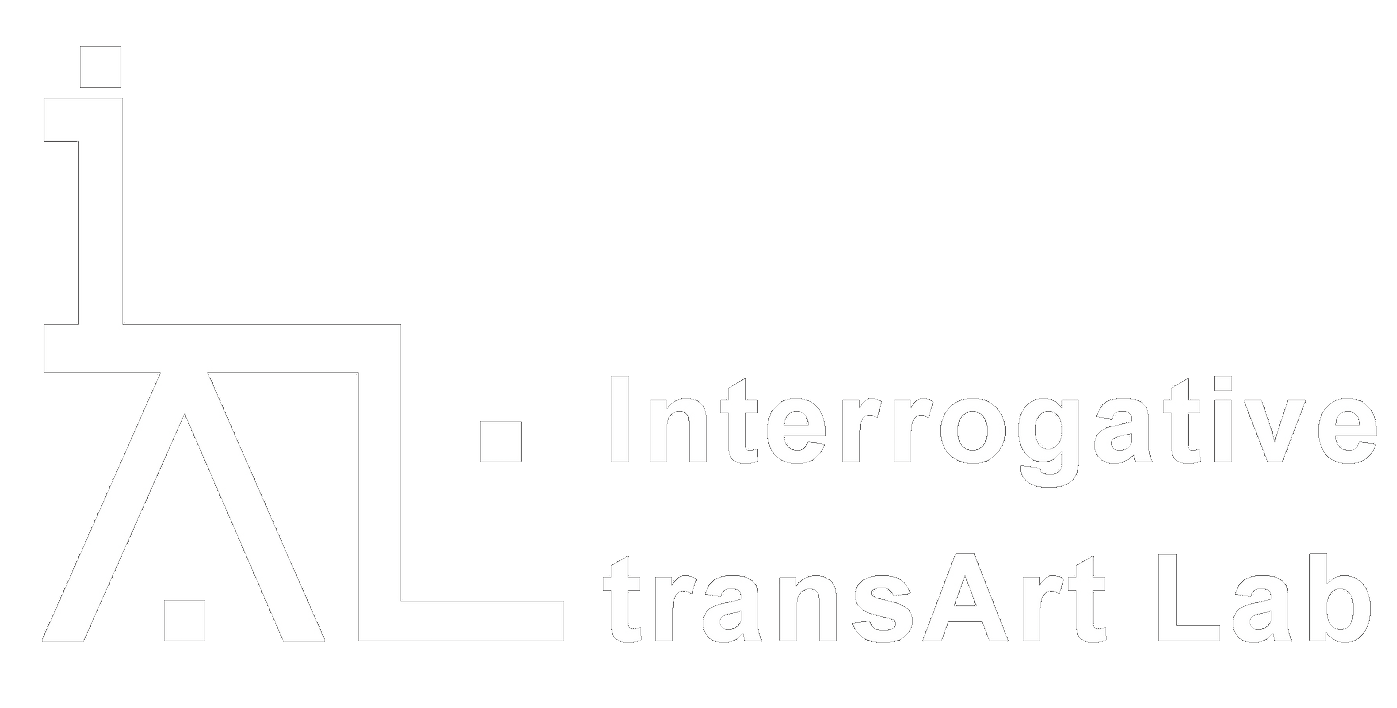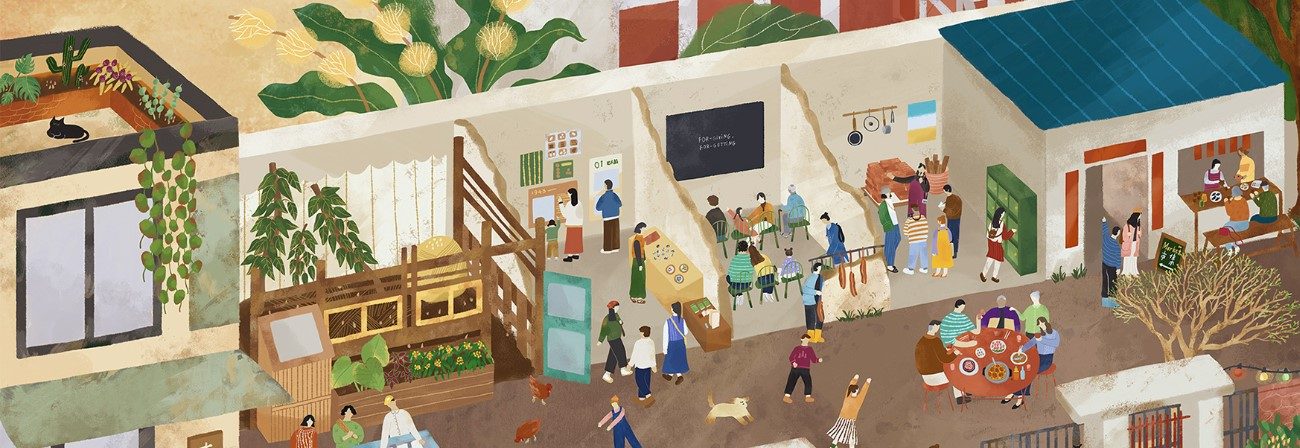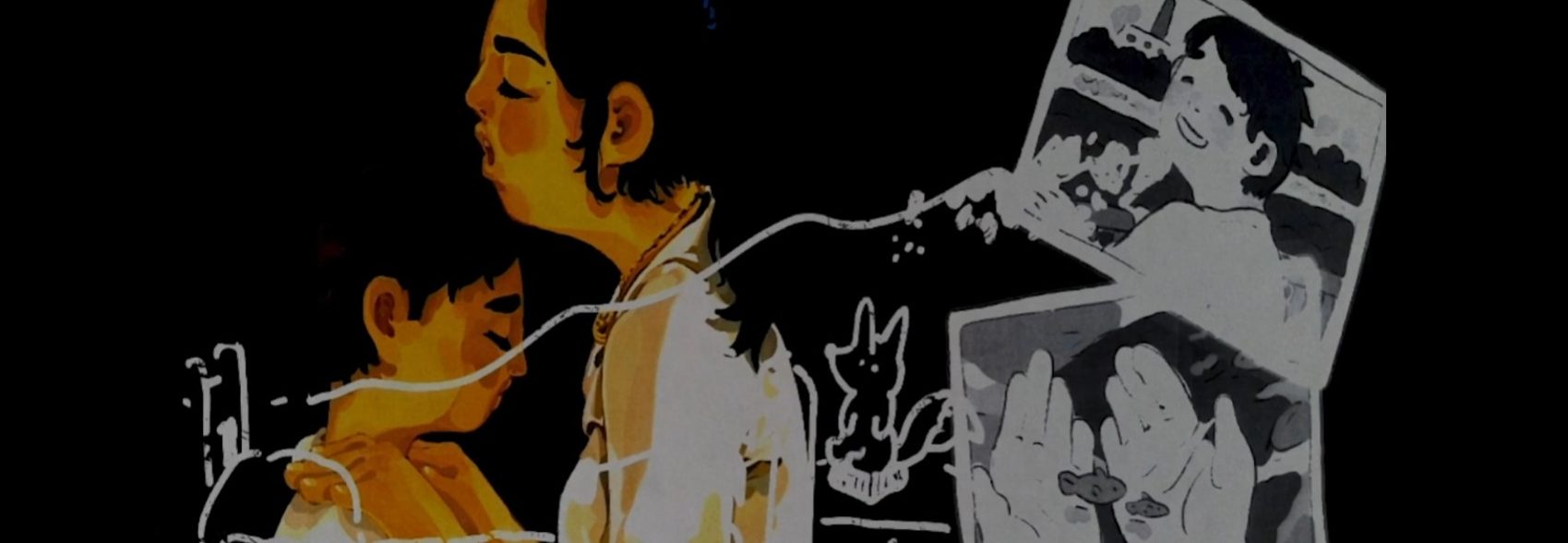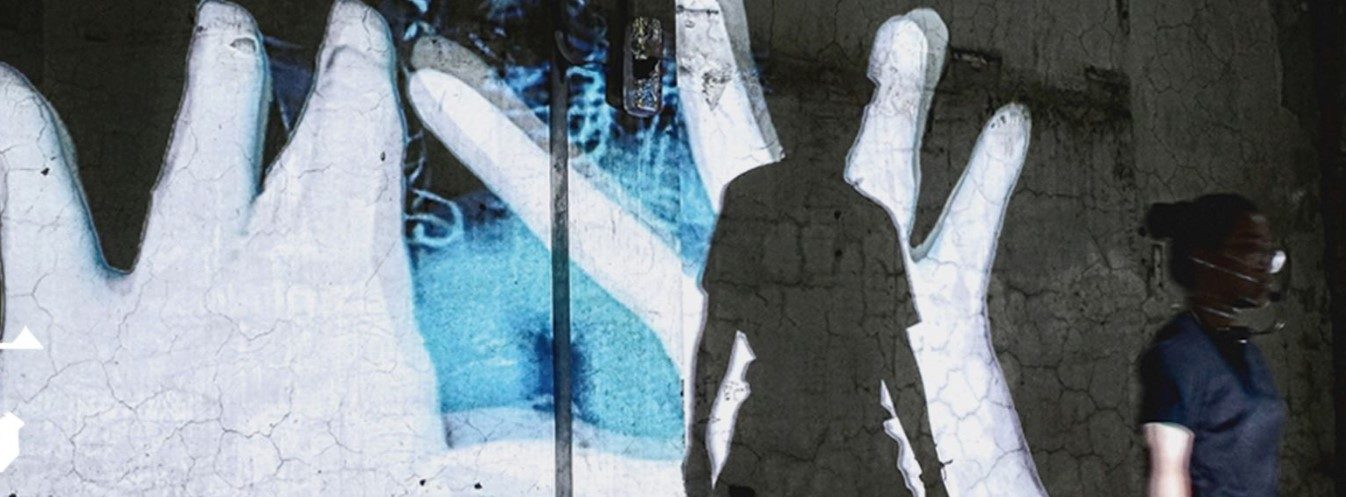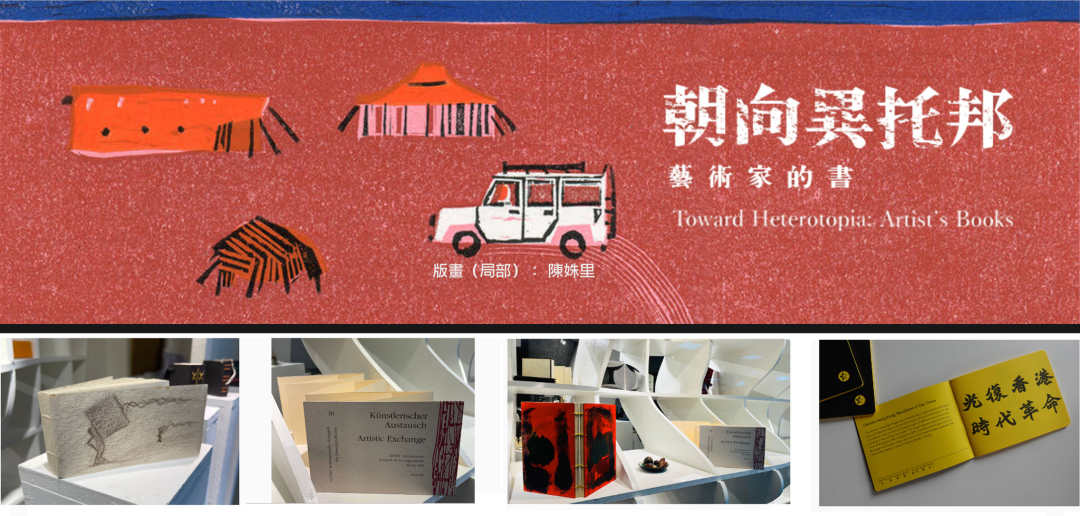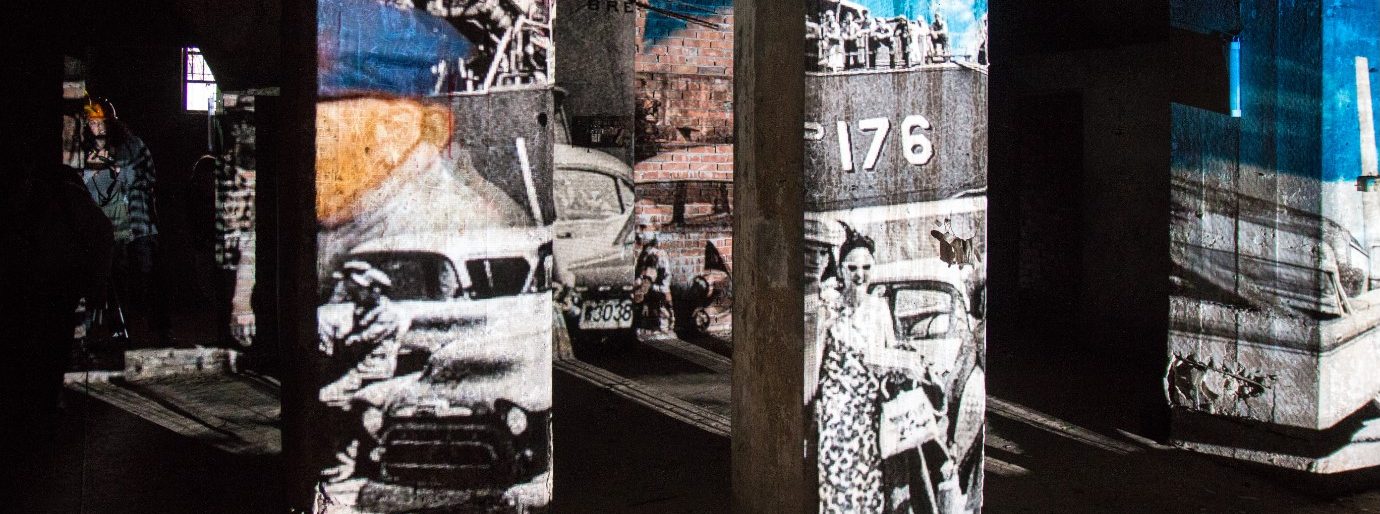初階說故事工作坊 Storytelling Workshop
Artist:傅昀畇
本課程主要關注地方議題,透過田野踏察活動的安排,讓學生進入現場進行資料採集,並進一步將內容轉化為多元的說故事形式。本課程主要是以新竹在地素材為養分,以各種說故事的手法來探究人文思想與生活紋理,一方面是對新竹地方人事物進行觀察與採集,一方面賦予內容一個具有觀點的表達形式,也是在探索說故事的各種可能實踐路徑。
This course mainly focuses on reflecting local issues through observing local people and things in Hsinchu. By participating the field trip activities, students are able to collect data, and further transform the content into various forms of storytelling. First, the student will give the content a form of expression with a unique perspective, and will also explore different ways of telling stories.
◆相關連結:燃後 (nycu.edu.tw)
影像敘事工作坊 Image Narrative Workshop
文字與影像的表意是敘事的起點,打開理解與質疑的多重路徑,影像敘事工作坊以創作專案展開,著重實驗性跨媒體影像敘事之各種可能,而不在於影像敘事之技術性的學習與操作。工作坊將針對特定文本進行改寫,轉化出跨媒體影像創作,透過創作探究影像敘事如何透過多媒體實驗給出異質思考與有意義的提問。
This course focuses on exploring experimental narratives, rather than on the technical learning. The workshop will rewrite a specific chosen text, and transform it into a new work. The purpose is to explore alternative cross-media imagery narratives. Through creative work, students will explore how imagery narratives can give rise of heterogeneous reflections and meaningful inquiries.
◆相關影片:
多媒體光桌說故事之實驗技法和敘事法之探究
The experimental techniques and narrative of Multimedia Light Table Storytelling
- 課程將教授學生學習「多媒體光桌說故事」的方法,透過課程來進行光桌說故事的實驗創作,修課學生在期末需完成一部原創的「多媒體光桌說故事」作品。
- 課程目的除了探索光桌說故事的可能性,也將引導學生觀察在地議題,借由光桌說故事的方式來對生命、社會議題等進行提問。
- 因多媒體光桌說故事特有的複合表演形式與多種表達手法,故其敘事結構與敘事美學也隨之轉變,形成獨特的敘事特質,這也是本課程想探究的重點之一。
- 因課程需求,請同學上課時需自備筆電、筆電vga轉接頭,並準備2~3分鐘之內的「自我介紹」投影內容。
Storytelling is a method that relates stories to audiences through one medium or another. However, storytelling was transformed by the advent of hybrid media and technology. Therefore, a storyteller is now more of a hybrid performer than the traditional concept of a storyteller, as emerging media and technologies are applied in storytelling. The non-traditional forms, methods, and aesthetics have affected storytelling in many ways. This course will experiment an innovative storytelling through real-time interactive images, using devices such as light boxes, document cameras, webcams, computers, projectors, etc., alongside the support of Processing software.
◆相關影片:
藝術家的書 Artist's Books
本課程是以探討手工書的裝幀方法、媒材應用與書籍設計為主。課程內容可分五大部分:
(1)西方書籍歷史與作書工具的介紹
(2)學習書籍裝幀與製作的古典方法
(3)藝術家手工書的創作
(4)開發複合媒材與裝幀方法在手工書的設計與製作應用
(5)籌備並參與「藝術家的書」展覽。
This course focuses on the study of Western bookbinding methods, media application and book design. There are five components of this course:
(1) Introduction of Western book history and bookbinding tools.
(2) Study of bookbinding and bookmaking methods
(3) Making of artist’s books
(4) Innovative application of media and bookbinding methods in book design.
(5) Participate “Artist’s Books” Exhibition.
◆鏡新聞報導: 【文藝賦格】藝術家書籍 #賴雯淑 #陳曉朋 #蔡胤勤#文藝賦格 #藝術家書籍 #實體書籍 #電子書 #獨立創作媒材。2022/3/9 https://www.youtube.com/watch?v=hU-3BzXzLOI
◆其他相關連結:Artists’ Books – 藝術家的書
藝術家的書_進階篇
Artist's Books: Soul Making through Book Making
本課程是以探討西方書籍裝幀法、媒材應用、書籍設計與創作等為主要內容。課程內容可依修課者之興趣選擇以下 (但不限) 專攻方向:
(1)書籍裝幀與製作的方法
(2) 創新書籍設計
(3) 藝術繪本創作
(4) 藝術字體在書籍的應用,或(5)書籍裝置藝術
This course focuses on advanced topics of Western bookbinding methods, media application in book, and artistic book design. Students can pursue their interests in bookmaking through independent projects. The directions of independent projects can include, but are not limited to, the following aspects:
(1) Western bookbinding and bookmaking
(2) Innovative book design.
(3) Book illustration
(4) Calligraphy
(5) Book installation.
繪本、漫畫和圖文小說之創作與探討
Study of Illustration, Comic book and Graphic Novel
課程提供學生透過繪本、漫畫或圖文小說創作和作品賞析,探討各種圖文創作的形式與敘事方法。修課同學將以自己書寫的故事文本,同時選擇兩種創作形式和發表平台,藉此思考一個故事若以不同形式和發表平台呈現時,創作者需如何改變其視覺語彙和設計思考模式。發表平台包括:電子書、臉書、部落格、平面印刷、YouTube等等,而同學將嘗試一個文本在不同創作形式和發表平台之間轉化的可能。
This course allows students to explore illustration, comic book or graphic novel through creating their own work and studying the contemporary artists’ works and experiences. Students are challenged to experiment with transforming their narrative from one form to another by adapting different form and presentation platform, such as from comic book in print to animation in YouTube.
繪本、漫畫和圖文小說之創作與探討(二)
Study of Illustration, Comic book and Graphic Novel (II)
本課程通過繪本、漫畫或圖文小說作品之賞析與創作工作坊的實務創作,帶領學生探索多種圖文創作的形式與敘事方法的可能。課程中將教授多種圖像創作與敘事方法,並邀請多位知名圖文藝術家參與課程講授創作經驗與方法,讓學生學習到更多實務創作的技巧。同時,藉由專業的圖文創作者之實務經驗,不僅能讓學生瞭解業界實際發展情形,也能讓學生對圖文創作職涯發展有更深入的瞭解。
With an appreciation of image books, comics or graphic novels, this course aims to guide students in exploring the possibilities of various forms and methods of narrating images. The students will gain a better understanding of career development as a graphic artist through attending lectures and workshops provided by the well-known artists.
質疑性設計:移動性光雕塗鴉
Interrogative Design: Mobile Graffiti Projection Mapping
以「質疑性設計」(Interrogative Design)為方法,以藝術製作為途徑,透過以藝術介入社會之路徑來檢視與反思民眾於公共空間中的使用權與發聲權,以理解當今台灣社會在公共空間與話語權的相關議題與困境。希冀透過質疑性設計和藝術製作之途徑,展開和重構說話者與觀看者的對話機制。課程將分三個階段來展開:
Using “interrogative design” and “art intervention” as means, students will examine and reflect upon how people use public space, and how they give their voice heard. The purpose of this course is aimed for establishing a dialogical process between a speaker and a listener/viewer through the approach of interrogative design and art intervention.
This course will be unfolded in following three stages:
1
透過訪談和田野調查,學生初步探索特定公共空間之使用現況與議題。
Through interviews and fieldwork, students will explore the current situation and issues of site-specific public space.
2
透過「質疑性設計」,結合創作者、移動式投影承載工具、場所三個元素,共構過渡性和中介性的公共空間,重新思考日常生活中公共空間之社會秩序建構。
Through “interrogative design”, the artist, mobile vehicle, and place are integrated as a transitional and intermediary public space, in which people are provoked to reconstruct the social order in the daily life.
3
修課同學針對感興趣之社會議題,在期末時完成移動式塗鴉光雕投影作品一件,並在公共場域發表。
Students are expected to complete a project of mobile graffiti at the end of the semester according to their chosen issues or interests. The final project will be performed in the public area.
質疑性設計:專題製作 Interrogative Design: Special Topic
本課程以質疑性設計為核心精神,透過教學與實作來推動「新竹六燃博物館」的理念,希望能為新竹市爭取建置一座以人文社會反思為核心精神,以智慧科技為路徑,以在地關懷與實踐為理念的未來博物館。課程以新竹六燃大煙囪廠房為實踐基地,聚焦在兩大面向:一是作品創作,二是參與在地社區議題,提出對新竹未來博物館的想像,以科技結合藝術與設計的方式,來提高大眾對該場域的理解,以藝術的手法再現「新竹前日本海軍第六燃料廠二戰遺址」的文化與歷史意涵,進而提高保存與活化該場域的意識,達到藝術介入或參與社會的目的。
This course adopts “Interrogative Design” as its core spirit to establish a museum aiming for social inclusive and the common good. Using technology as a vehicle, and art production as social intervention, the students will learn how to enhance the awareness of preserving and revitalizing the Imperial Japanese Navy’s Sixth Fuel Factory Hsinchu Branch, a WWII industrial relic preserving the legacies of war, technology, protected Asian parti-colored bats, and military dependents’ housing culture in Taiwan.
第一階段
post theater藝術總監 Max Schumacher 9/2起先密集式開授【perPhonance 】表演工作坊,同學將學習使用手機做表演與短片(iPhone 或android 手機的使用者都歡迎!)
“perPhonance” Workshop Introduction
第二階段
將進行跨域藝術表演與製作整合,除了由賴雯淑、董昭民、凌天、王怡婷四位老師教授互動劇場音樂製作、劇場演出、多媒體互動投影等之外,修課學生也將再度與德國post theater 藝術總監Max Schumacher及其核心成員Yoann Trellu 一起工作,透過協力合作完成兩場互動多媒體劇場,以台灣、日本、中國和德國曾共同參與的世界二戰為主題,進行藝術創作實踐、省思與對話。
This trans- disciplinary course is taught by professors Wen-Shu Lai, Chao-Ming Tung, Tien Lin, and Yi-Ting Wang. It is geared toward to production of integrative art performance pieces. Students will work directly with art directors of post theater Max Schumacher and core staff Yoann Trellu. Through collaborating, all the instructors and students will work together on the production of interactive multimedia theater pieces. The themes are mainly centered on the reflections and dialogues with “Others” in the WW2 historical context. The students are invited to ponder upon their identities assuming they were participants of the WW2.
◆相關影片:
生物科技藝術 Biotech Art
「生物科技藝術」由蕭育源和黃兆棋兩位分子醫學與生物工程研究所老師、應用藝術研究所賴雯淑老師,以及生物科技系的麥如村老師聯合授課。此課程之目的為提升學生對跨域藝術的認知素養, 加強對於生物科技的多元探索,並對生物科技所衍生出的人文與倫理議題進行討論與批判。課程目標有三:
- 對於生物科技的美與倫理進行剖析與討論,並藉由藝術工作坊的模式,來呈現生物科技相關的美學與倫理議題。
- 培養學生的設計能力、美學、藝術涵養與人文關懷精神。
- 提升學生對於生物科技的熱情與增加生物科技學系學生之跨領域發展方向。
課程內容包含教師講授、小組討論以及生物科技藝術實作。期末時各小組需完成生物科技藝術作品、參與成果展覽。
“Biotech Art” is taught by three professors from the Institute of Molecular Medicine and Bioengineering, Institute of Applied Arts, and the Department of Biotechnology. The purpose of this course is to enhance students’ artistic literacy, strengthen their knowledge of biotechnology, and criticize the ethical issues derived from biotechnology. The purposes of this course are:
- Students will learn to analyse and discuss the aesthetic and ethical issues of biotechnology, and introduce them through artistic creation.
- Nurture students’ abilities in art, design, critical thinking and humanistic thinking.
- Stimulate students’ interest in biotechnology and diversify their career development opportunities.
There are three ways to develop this course, including lectures, panel discussion and Praxis biotechnological art. At the end of the semester, each group is required to submit its biotechnology art project and participate in a joint exhibition.
參與式永續生活設計 Participatory Design for Sustainable Living

「參與式永續生活設計」課程目的是為提升學生發掘大自然的運作模式,效仿其模式來設計、建造、管理並改善個人、家庭與社區為了永續未來所做的種種生活設計方案,以尋求並建構人類和自然環境的平衡點。課程理念與目標如下:
- 創建新的參與式永續生活設計課程或學習社群
- 培養學生共同設計(co-design)、參與式設計(participatory design)的理念與生態關懷精神
- 希冀此課程能提供學生一個嶄新的生命視野與未來的專業發展可能方向。讓科技、社會、永續生活能融合在一起。
The course of “Participatory Design for Sustainable Living” blends teaching and learning into the community and engage in community development through sustainable life design in permaculture, so as to facilitate the sustainable development of human race and other species.
The philosophy and objectives of this course are as follows:
- Create a new participatory, sustainable living design course or learning community
- Cultivate the concept of co-design and participatory design and the spirit of ecological care among students
3. It is hoped that this course will provide students with a new perspective on life and possible directions for future professional development.
慢設計 Design for Mindfulness and Slowness

課程以「慢文化・慢設計」為核心精神,透過「慢食」、「慢電影」、「慢時尚」、「慢藝術」、「慢建築」、「慢行」六個主題(Slow Food, Slow Cinema, Slow Fashion , Slow Art, Slow Architecture and Slow Movement)一起學習放慢腳步,細心觀察和體會所在之處,帶著察覺以用心的設計或藝術行動來回應生命與生態環境的現況;體會生態環境對我們所「做或不做之事」的回應。透過設計實務課程逐步落實到日常生活實踐中,從中形成「慢」的精神與姿態,逐漸凝聚出台灣的慢文化內涵。
This course adopts “Slow Culture and Slow Design” as its core spirit, including Slow Food, Slow Cinema, Slow Fashion, Slow Art, Slow Architecture and Slow Movement. Students will learn how to slow down, observe and experience daily life, and respond to the current situation and ecological environment with sustainable design or taking action with awareness. Through observing how the environment responses to what we “do” or “what we don’t do”, the students learn how to implement the design into day-to-day life, and gradually forging the slow culture of Taiwan.
電影視覺符號與比喻之應用
The Application of Visual Symbols and Metaphors in Films

這堂課的主要目的是透過電影的欣賞、文獻的閱讀來思索自己與他人生命的意義。修課同學除了解讀電影的內容,也將探討隱喻與視覺符號在電影中的意義
與應用,並把課堂中所討論過的電影與自己的藝術創作或設計做聯結,在期末完成一件作品。
This is a course that focuses on how films can provoke students to mediate the meanings of their personal lives, as well as others’, in a classroom setting where film is used as a vehicle to teach visual symbols and metaphors as well as to inspire students into bringing hidden meanings forward through identifying or debating with the film characters. Students will be challenged to reflect critically on the films shown. They will review articles written by film critics, discuss their opinions, and decipher the visual symbols and metaphors presented in the films. Based on their research and interpretation, students make personal connections to the film by writing response papers and/or creating digital arts. This approach will offer students opportunities to play roles in complex social, political and cultural contexts by integrating personal inquiries and interpretations into their digital works. It will offer another dimension to learning visual communication.
藝術研究深論 Advanced Research on Art

課程目的是培養修課同學以基本的現象學態度來觀察和認識人事物,學習如何對事物自身呈現的方式進行描述、理解和詮釋,從而產生新意義。課程也將針對現象學、藝術存有學和詮釋學如何能幫助我們進行藝術創作和藝術研究做深入的探討。
Life itself can be read and interpreted, and this interpretation itself discloses life as a narrative. The purpose of this course is to study and examine Interpretation Theory by Paul Ricoeur, “I and Thou” Theory by Martin Buber, and Phenomenology. The ultimate goal of this pursuit is to make the story of our life a good story.
幽靈敘事 Phantom Narratives
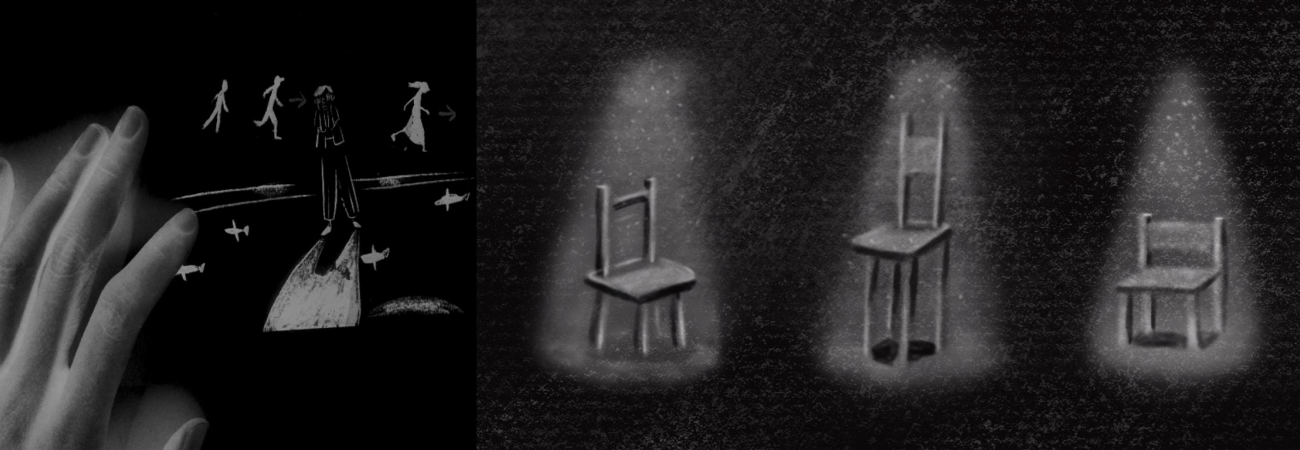
本課程主要在研讀幽靈敘事理論,釐清「集體無意識」、「文化無意識」(歷史記憶的區域),以及「外顯的文化模式」之間的關聯性,以及文化創傷的代際傳遞過程及其產生的影響。
1962年,喬·亨德森(Joseph L. Henderson)正式提出「文化無意識」(The Cultural Unconscious)的概念,並逐漸發展出「文化情結」cultural complex的理論。這個理論填補了集體無意識與個體無意識、個體情結與原型之間的空白,使得我們在群體生活之中的經驗對我們本身造成的影響,擁有了可以被放置的地方。塞繆爾·金布爾斯(Samuel.Kimbles)完整地繼承了亨德森的思想脈絡,並繼續深入研究文化無意識和文化情結理論,並將其與社會現象以及臨床實踐相互結合起來,進而提出「幽靈」的概念,建立幽靈敘事理論。
This course focuses on the study of Phantom Narratives, clarifying the relationship between the “collective unconscious”, “the cultural unconscious” (the aspect of historical memory), and “explicit cultural schemes”. The theories of the Cultural Unconscious by Joseph L. Henderson, and Phantom Narratives by Samuel Kimbles will be introduced. Furthermore, we will discuss how Intergenerational processes are formed, transmitted as Cultural Traumas.
新竹六燃地方學:大學社會責任與在地實踐
Localogy of the Sixth Fuel Factory: University Social Responsibility &Local Praxis

地方學是最貼近在地生活的歷史敘事與生活經驗,它是一門行動的學問,沒有行動,觀念會褪色;沒有實踐,知識理論會萎縮。因此,地方學企圖結合知識與行動,一方面尊重經驗知識,從實踐中觀察生活與生態;另一方面,從宏觀處視地方為一個完整系統,看到其發展脈絡特色與價值,提出跨域整合的觀念與治理方法,進行在地實踐與反思,具體化大學社會責任理念。
「新竹六燃地方學」以具有戰爭時代意義的燃料技術工業遺產──日本海軍第六燃料廠 新竹支廠為錨點,展開討論。課程包含「新竹六燃歷史」、「藝術介入社會」、「生態保育」、「永續生活設計」「在地文資活化」與「博物館治理」六個單元,每一單元都緊扣「新竹六燃」。透過系統性地瞭解新竹六燃二戰遺址的當代意義與相關議題,不僅是開啟對新竹六燃的認識,也是探問新竹這個城市對自我的定義與身份認取,尋求建構以新竹六燃為視角的在地知識體系與在地論述之可能性,逐步共同創造出嶄新的「公共性」與「社會想像」。
The course “Localogy of the Sixth Fuel Factory: University Social Responsibility & Local Praxis” is a means to preserve and revitalize the culture and history of the Sixth Fuel Factory. Localogy concerns the historical narratives and life experiences closest to local life. It is an action-oriented subject. Concepts without action will fade, theories without practice will wither. Therefore, designed as a combination of knowledge, experience and action, this course attempts to make practice-based observation of the current lifestyle and ecology at the Sixth Fuel Factory. On the other hand, the course macroscopically examines the Sixth Fuel Factory as an intact system, identifies the attributes and values in its developmental context, proposes the idea and governance model of trans-disciplinary integration, and engages in down-to-earth praxis and reflection.
設計個別研究 Independent Study on Design

以個別學生之發展方向為主,一方面擴展其對當代藝術之研讀與探究,一方面擬定個別的研究或創作計畫草案,進行個別指導及討論。不論是創作上的討論,畢業論文撰寫、出國進修的規劃與準備、專業生涯的發展或生命中待思考的問題,都可以在這堂課裡進行討論。
This course is designed for students who are working on their research thesis or creative project. Discussion is based on the topic of each student’s research or creative project.
